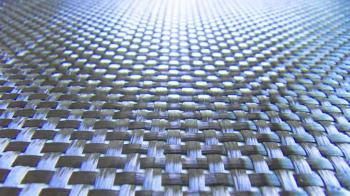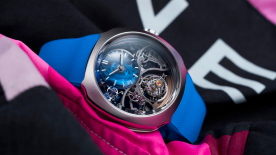As our detailed look at the different types of carbon fibre composites used in watchmaking shows, the material has great appeal in timepieces for the same reasons it is used in cars and aeroplanes: it is lightweight and robust.
But carbon fibre composites can also be complicated to produce. The process starts with the production of the carbon fibres themselves, which are literally threads of carbonised polymer (usually polyacrylonitrile, or PAN) that have been heated to 3,000°C. Although these individual fibres on their own are brittle, when aligned in batches, tapes or sheets, they can absorb stresses throughout a structure. Once bound by a resin that hardens when it is cured in an autoclave, they become a carbon fibre composite. One of the main advantages of this production process is that components can be produced to any shape or dimension required without any need for further machining.
This is not yet the case for watches, whose carbon fibre cases are milled on CNC machines from solid blocks of carbon fibre composite. But new production methods may soon find their way into the watch industry. New machines are entering service that can automatically knit the fibres into a particular form. Second, the drawn-out process of curing carbon fibre in an autoclave could be replaced by new processes that dispense with the autoclave altogether. Resin transfer moulding, or RTM, for example, involves placing a preform of carbon fibres into a mould into which resin is injected before heat and pressure is applied. This can cut processing times by more than half.
Although cost is much less of a factor as far as carbon fibre watches are concerned, new production methods can also reduce the cost of carbon fibre as a raw material. The production of the fibres alone can account for up to 90 percent of the energy costs for producing carbon fibre composites, so any means of reducing this is welcome. One way is to used recycled fibres or manufacturing offcuts. The Carbonium® that debuted in the Ulysse Nardin X collection this year is the first such example in watchmaking and consists of 95% carbon by-products. At the opposite extreme to the miniature size of a watch case, recycled carbon fibre can be used in 3D printers to print much larger objects.
The more carbon fibre composites are used in manufacturing, the easier it will be to use recycled carbon fibre in watches and the more brands with sustainability policies might take to using it. Whether that translates into cheaper carbon fibre watches remains to be seen.






